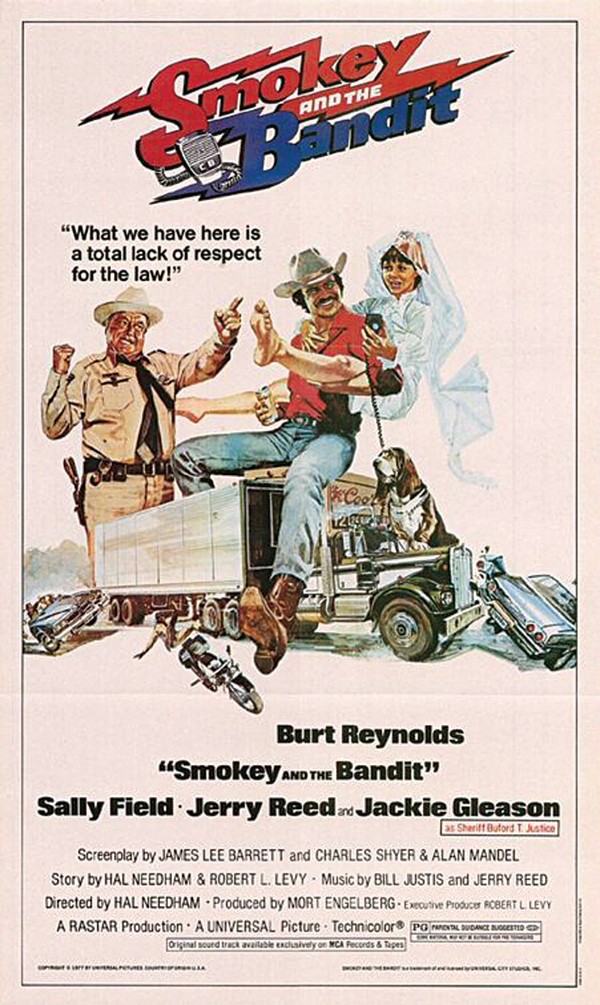Kerry Crawford wonders what separates “street art” from graffiti in her “Memphis Streets” column.
Month: October 2013
Every Part I deserves a Part II.

Anyway, we all know what a cage match is, right? Obviously, it’s a wrestling match where two, three, four, five, or even six beefy, screaming, steroid-pumped maniacs climb into a cage, or a barbed wire cage, or an electrified cage, and hit each other in the face with folding chairs. Like this…
The Memphis Improv Cage Match is exactly like that only it’s six or eight or a dozen or more beefy area comics who climb in the cage and hit each other with folding chairs. Only, in this case the cage in imaginary, and instead chairs it’s zingers and whatnot. And it all goes down Saturday, Nov. 2
These occasional matches are an extended family reunion for Memphis’ Improv community and gives groups like FreakEngine, Running Gag, and The Wiseguys an opportunity to square off in what is being billed as, “a hilarious battle royale.”
So this promotion isn’t all a shameless selfie, but as I like to mention as often as I can, I get lots of help from the Memphis comedy community, and I couldn’t do this blog without assistance from The Wiseguys and contributors like Joey Hack, Memphis ex-patriot Robert Callahan, and all the rest.
You can get all of the details here.
Attention all complainers, curmudgeons, haters, know-it-all-suburbanites, too-cool Midtowners, worry-wart East Siders, defensive Dowtowners and anyone else with a my-way-or-the-highway opinion about Memphis: there’s a new place to ply your trade online.
Dearcity.org launched an expanded site for many major metro cities earlier this month. The first Dear City site launched four years ago in Copenhagen, Denmark by two friends, Mikael Staer and Philip Battin. They then opened sites for New York, London, and Berlin.
Dear City site users search for their city and leave an anonymous message or read messages left by others. The site is billed as a tool for change, a “social cluster of opinions that express the thoughts of the man on the street.”
“Dear City becomes a documentation of contemporary life and its ups and downs,” the site says. “We believe change is achieved through all levels of communication.”
So far, only two messages have been on the Dear City Memphis page. One pleads for (someone?) to clean up Elvis Presley Boulevard and save historic buildings. Another says the current public transportation system makes it tough to visit the city’s neighborhoods.
Comments don’t have to be negative, of course. But a quick look at the comments sections of Memphis media outlets, Topix, or local social media predicts the Dear City Memphis site won’t likely tout the city’s rainbows and sunshine.
Indie Memphis: Thursday
Indie Memphis, the four-day multimedia, multisensory extravaganza is upon us. By the time Sunday dies, the festival will have presented 50 feature films, 82 shorts, 13 panels, conversations, and seminars, and 11 parties and social events. Where to begin? What to do?
Though it’s Halloween, have no fear. The Memphis Flyer is here to help guide you through the festival. Start by reading the Flyer‘s cover story on Indie Memphis here. Then check here on Sing All Kinds each day for recommendations on that day’s schedule. — Greg Akers
THURSDAY
[jump]
“Best Bites” Opening Night Reception, 5 p.m., Playhouse on the Square
Featuring food selections from winners of this year’s Memphis Flyer “Best of Memphis” poll (shameless plug).
Escape from Tomorrow (Randy Moore, 90 min.), 7 p.m., Playhouse on the Square, with live music by John Lowe before and an actor Q&A after the screening
Few sights evoke more middle-class existential dread than that of a family trying to enjoy itself at a theme park. But that image is the linchpin of writer-director Randy Moore’s Escape From Tomorrow, which was secretly shot without permits at Walt Disney World in Lake Buena Vista, Florida.
Moore’s film begins inauspiciously: Family man Jim (Roy Abramsohn) is fired via telephone while on vacation with his wife and two kids. Suddenly, the tram Jim and his family must ride to reach the Magic Kingdom feels like a train headed somewhere far more sinister — a corporate-sponsored, all-ages concentration camp where bands of bored, diseased humanity trudge around mindlessly trying to survive in Mouseschwitz, frittering away the hours by waiting in line for rides and attractions that can turn threatening at any moment.
As Jim and his family try desperately to enjoy their time together, Escape From Tomorrow starts to look and feel like a lost or missing episode of Louie. Jim’s deep ambivalence about marriage, fatherhood, and basic human interaction (and his frequent, mournful sex daydreams about a pair of underage French girls he keeps seeing at the park) further underscore the film’s debt to the rhythms and ideas of Louis C.K.’s innovative, unpredictable TV series.
The opening 50 minutes of Escape From Tomorrow effectively and repeatedly prove that the Most Magical Place on Earth is as awful and alienating as Anytown, USA. But Moore loses steam after an eerie nighttime sequence set near Epcot. Yet the film’s uneven, increasingly paranoid and nonsensical final third includes a grim fairy tale about a former Disney worker driven mad from faking happiness all day long. When Mickey, Donald, and Pluto finally appear, they look as creepy as something conjured up on Bald Mountain. And after the film’s final image, you’ll never look at Tinker Bell in the same way again. — Addison Engelking
Avarice (Rachel M. Taylor, 15 min.), 7 p.m., Playhouse on the Square, plays immediately before Escape from Tomorrow
This immensely polished local short is like a sizzle reel for production design and special effects. Rachel M. Taylor writes/directs Avarice, a fantastical tale about a little girl (Haley Parker) who sees a magical glowing light and follows it out of her bedroom and into the woods. It leads her to a shimmering jewel, which turns black when she touches it. The nonverbal film has a palpable creep factor as the girl goes deeper into the unknown; the lesson seems to be that material things are like a spider in a web, waiting to trap us.
Frankenstein (James Whale, 70 min.), 7 p.m., Memphis Brooks Museum of Art
Let’s be serious, people: Frankenstein is essential viewing.
There’s so much to love in this 70-minute masterpiece: the stark Expressionist production design which taught moviegoers to shiver whenever they saw graveyards and mountain castles; the sly humor that director James Whale would push to the forefront of 1935’s Bride of Frankenstein; Colin Clive’s mad, transcendent chant (“It’s alive!”), surely one of the high points of the American sound cinema; Boris Karloff’s sensitive, subtle portrayal of the mute, beauty-starved monster. Interestingly, the monster first appears with his back to the audience; his face is revealed in a series of shock cuts.
Like many of the best Universal horror films, Frankenstein is incredibly sad. In fact, I think it’s more upsetting than King Kong, which it predates by two years. — Addison Engelking
Touchy Feely (Lynn Shelton, 89 min.), 7:15 p.m., The Circuit Playhouse
At first, the patchouli-scented realism of Lynn Shelton’s Touchy Feely threatens to lull people to sleep. But while Shelton — who, as a writer-director-editor, is a rare triple threat — spends plenty of time documenting the soothing patter of professionals who have to touch other people while they work, there are serious issues underneath her characters’ skins.
Touchy Feely focuses on two siblings: a masseuse named Abby (the always-awesome Rosemarie DeWitt) and a dentist named Paul (the equally affecting Josh Pais). When Abby suddenly loses her ability to put her hands on her clients, Paul seems to accidentally discover a way of curing his patients’ ailments through routine procedures. (Ellen Page co-stars as a disaffected Seattle twenty-something, a role she was predestined for from birth.)
Shelton uses stationary camera setups for nearly every shot, which create a soothing rhythm she deliberately breaks late in the film. As the camera drifts through a nearly abandoned house, a drugged-up Abby reminisces about an old boyfriend. This scene, which lets Terrence Malick and Joe Brainard shake hands with each other, provides an apt if too-soon closing to a mellow movie that, almost as an aside, features one of the most talented ensembles of the year. — Addison Engelking
Rosemary’s Baby (Roman Polanski, 136 min.), The Circuit Playhouse
The absurdist horror film Rosemary’s Baby is one of Roman Polanski’s most suggestive and unnerving works. A sexy, never-better Mia Farrow stars as a young waif in New York City who moves into a stately apartment building with her actor husband (John Cassavetes). Once they settle in, their elderly neighbors seem overly eager and willing to lend them a hand — and that’s when things start to get weird.
The many esteemed veterans in the loaded cast delight in their slyly transgressive roles; Ruth Gordon won a well-deserved Oscar for her role as a solicitous old bat who plies Rosemary with strange potions during her pregnancy. For most people, the most memorable part of the film is its blasphemous climax. But I’m partial to an earlier, campier scene that dives headlong into the abyss once Rosemary utters a line of dialogue thick with fairy-tale malice: “This is no dream — this is really happening!” — Addison Engelking
For the full schedule, go to Indie Memphis’ page here.
[Updated at 1:15 p.m. with review of Avarice, inadvertently not included in original post.]
Spurs Knock Off Grizz in Season Opener
Kevin Lipe says the Grizzlies’ season opener looked a lot like the team’s last game with San Antonio. But not to worry. Much.
Seeking Recognition
When Ijpe DeKoe and Thom Kostura married in New York in 2011, they never imagined that two years later they’d be living in a state that, for legal purposes, considers the couple to be complete strangers.
But DeKoe is a full-time sergeant in the Army Reserves, and after returning from a tour of duty in Afghanistan in May 2012, DeKoe was transferred to the base in Millington. He and Kostura are one of four Tennessee couples named in a lawsuit filed last week challenging the constitutionality of the state’s anti-recognition laws.
The laws prohibit the state from recognizing the marriages of same-sex couples who were married in states that allow same-sex marriage. The lawsuit claims that Tennessee’s refusal to recognize valid out-of-state same-sex marriages violates the U.S. Constitution.
The lawsuit is being spearheaded by the National Center for Lesbian Rights. The other couples named in the suit include Dr. Valeria Tanco and Dr. Sophy Jesty of Knoxville, Kellie Miller and Vanessa DeVillez of Greenbrier, and Matthew Mansell and Johno Espejo of Franklin.
“The day we got married, there was a contract saying that I am responsible for him for the rest of our lives, and he’s responsible for me. If something happens, we are there to catch each other,” Kostura said of DeKoe. “That is a giant commitment to make to someone else. It’s disheartening that Tennessee doesn’t respect that as it does with [heterosexual] couples.”
Kostura and DeKoe first met when they were both counselors at Boy Scouts camp 15 years ago. The two became friends and stayed in touch for years as DeKoe moved around with the military and Kostura lived in New York. They married after learning of DeKoe’s deployment to Afghanistan, just a few months after same-sex marriage became legal in New York. Because the federal government and the military recognize same-sex marriages, Kostura and DeKoe are in the position of having their marriage honored on base and ignored in the rest of the state. Kostura is allowed all the benefits of a military spouse.
All of the couples named in the suit lived in a marriage equality state and married there before moving to Tennessee. Tanco and Jesty married in New York in 2011, where they lived until the two took jobs at the University of Tennessee’s College of Veterinary Medicine in Knoxville.
Miller and DeVillez lived in New Jersey and married in New York in 2011 but later decided to relocate to Greenbrier, Tennessee, where Miller had previously lived.
Espejo and Mansell married in California, where Mansell worked for a large law firm, in 2008. That law firm moved its offices to Nashville last year, and the couple and their two children moved there for Mansell’s job.
While it’s possible that this lawsuit could have a broad sweeping effect on Tennessee’s gay marriage ban, Memphis attorney Maureen Holland, the local attorney involved in the suit, said the judge could choose to be as confined or as broad with his decision as he chooses.
If necessary, Holland said, future lawsuits addressing recognition for same-sex married couples who live in Tennessee and traveled elsewhere to marry and for Tennessee residents who wish to marry here may follow.
As for Kostura and DeKoe, they’re hoping the judge’s decision will help other Tennessee same-sex couples.
“We want the recognition [from the state], but we also want to help other couples who are not in our position with the benefit of a federal job,” DeKoe said. “There are thousands of [same-sex] couples in this state who do not have federal jobs or who are state-dependent.”
Power Struggle
Memphis residents will get a say on how the Tennessee Valley Authority (TVA) will make power in the next 10 to 20 years in a public hearing on Wednesday, November 6th.
The federal energy corporation is looking to tweak its long-term plan, setting the amounts of power made within its hydroelectric dams, coal-fired plants, and more. The final product of the 18-month-long project will be a chart outlining how much energy is produced by all of TVA’s generators.
TVA officials did not expect to make changes to this plan so soon after it was originally set in 2011. But “significant” changes in the economy pushed the corporation to review its plan, TVA spokesman Duncan Mansfield said.
Natural gas prices have fallen to nearly half of what they were in 2011, he said, a fact that may shift more reliance on natural gas-fired power plants like the 774-megawatt Southaven Combined Cycle Plant that TVA bought earlier this year for $400 million. Part of the natural gas price decline is due in part to “fracking,” the still-controversial process of extracting natural gas which has been blamed for adverse effects on the environment and human and animal health.
Also, electricity sales have weakened. Sales usually grow between 2 and 3 percent each year, Mansfield said. But that growth has declined since 2011, thanks to downward economic pressures and new energy efficiency programs begun by manufacturers.
“We want to get as much input from stakeholders, the general public, and community and business leaders as we can,” Mansfield said. “There’s a great interest in transparency in letting folks know what TVA is considering.”
Memphis Light ,Gas & Water (MLGW) is TVA’s biggest customer, buying about 11 percent of TVA’s total output. Dana Jeanes, MLGW’s treasurer and chief financial officer, said he will sit on a three-member board to aid TVA through the planning process. But he said he’ll be representing all of Tennessee’s 150 power distributors and that MLGW won’t get more influence on the process based on its size.
Jeanes said he won’t bring a list of policy recommendations. But he knows decisions are coming on converting more coal-fired plants to use another fuel, building new power plants, and bringing more nuclear plants online.
Scott Banbury, the Memphis-based conservation chair of the Tennessee Sierra Club, said he will bring an agenda to the hearing.
“We’re idealists, and of course we’re going to advocate for what we believe is ultimately right,” Banbury said.
He’ll encourage TVA representatives to increase their study and use of renewable and alternative power sources, especially a new wind energy project coming online in 2017.
The Plains and Eastern Clean Line will generate 3,500 megawatts of electricity from wind farms in Oklahoma’s panhandle and pump that energy straight to Southeastern states via 700 miles of high-voltage lines to a TVA station in Atoka. The TVA could decide to buy and sell that energy, which could power about one million homes.
The Memphis meeting is scheduled for Wednesday, November 6th, at 7:30 p.m. at MLGW University at 4949 Raleigh-LaGrange Road.
Fly on the Wall

Captain Chaos
Memphis-born actor, director, and stuntman Hal Needham knew what the American people wanted to see blown up bigger than life on the big screen. They wanted to see car chases. And car wrecks. And they wanted to see cars explode and humans falling from incredible heights. Needham, who died last week at 82, broke his back and 55 additional bones to give movie and TV audiences a thrill. The go-to stunt double for Burt Reynolds also punctured a lung and lost a few teeth and some of his hearing. As a director, Needham is probably best represented by his big screen debut in Smokey and the Bandit, a film capitalizing on the CB radio craze of the 1970s. The film starred Reynolds, Jerry Reed, and Sally Field as a trio of misfits and outlaws illegally transporting Coors beer from Texarkana to Alabama with Jackie Gleason as Sheriff Buford T. Justice in hot pursuit. It was the second highest-grossing film of 1977 after Star Wars. Needham directed a string of kitsch classics including Cannonball Run and Megaforce. Respect.
Neverending Elvis
Elvis reasserts his claim as the King of Rock-and-Roll, by proving that death is no excuse for not cutting a duet with British singer and reality show phenom Susan Boyle. Boyle is sampling Elvis’ “O Come All Ye Faithful,” singing along and releasing the single to raise money for her favorite charity, Save the Children. “Dueting with Elvis was beyond my wildest dream,” Boyle was actually quoted as saying.
Grifters Reunion
As Meanwhile in Memphis: The Sound of a Revolution premieres November 2nd at the Circuit Playhouse as a part of the Indie Memphis Film Festival, fans of recent Memphis music history will have a triumph of their own.
Directors Robert Allen Parker and Nan Hackman’s biggest coup may have been convincing local indie-rock godfathers the Grifters to reunite after more than a decade of inactivity. The band was both one of Memphis’ biggest local draws and most successful exports of the 1990s, releasing several LPs, EPs, and singles (the 1994 full-length Crappin’ You Negative received rave reviews from publications like Rolling Stone and Spin) and touring extensively until around 2000, when exhaustion and the emergence of new projects and opportunities led the Grifters to slow things down and ultimately disband.
“We toured a lot,” the band’s singer/guitarist Scott Taylor says. “When we first took a break from all the touring, we weren’t in a hurry to get back in the van. The musical atmosphere had changed, and the stuff we were doing people weren’t as interested in — it got harder to get good shows. And we were all excited about our new bands.”
So the members of the Grifters went out on their own — Taylor with the Porch Ghouls (“We toured with Kiss and Aerosmith for almost two years,” he says) and Chopper Girl/Memphis Babylon; singer/guitarist Dave Shouse with Those Bastard Souls, the Bloodthirsty Lovers, and, most recently, >mancontrol<; and the rhythm section of Tripp Lamkins (bass) and Stan Gallimore (drums) with Dragoon.
Earlier this year, however, the group received an intriguing offer from the directors of Meanwhile in Memphis, who were looking to book bands for an after-party for the film’s premiere.
“Nan and I decided to make them an offer, even though we knew that the odds of it happening were slim to none,” Parker says. “There were even some people in the Memphis music community who told us that it could never possibly happen. I sent letters to each of the Grifters proclaiming how important they are to our documentary, to their fans in Memphis, and to the legacy of Memphis music altogether.”
“None of us were particularly interested in reliving the past,” Taylor says. “We were more into moving forward in our own directions. With a few exceptions, I’m not really into the ‘cool ’90s band goes back on the road’ thing. It didn’t seem cool to be like, ‘Hey, look at us. Look at what we did in the ’90s.'”
“Never say never,” Parker says.
“The reason we’re doing a reunion now is the documentary,” Taylor says. “The movie talks about our role in the Memphis scene of the ’90s. We all felt it was appropriate to play the show in conjunction. Over the years, we’d get these phone calls from out in the wilderness,” Taylor says. “Some guy would call and say, ‘You guys were my favorite band. I want you to play my wedding.’ It was never anything serious. Of course, we are hard to get in touch with, so maybe that was it too.”
Whatever reluctance the Grifters may have felt at one time about getting back together, the band is definitely enjoying the experience of reviving the project now — at least for one night.
“Practice has been really great. The songs sound better than ever, I think,” Lamkins says.
“It’s amazing,” Taylor agrees. “It’s been refreshing to come back to some of the songs. We’re all pleased that the material doesn’t sound too dated. We were always a band that tried to write timeless songs, songs that weren’t stuck in a particular genre.”
“I expected, at some point (but not knowing when), the Grifters to play again due to the sheer awesomeness and intensity of the band as a unit,” says Sherman Willmott, founder of Shangri-La Records, which released Grifters records through the ’90s until the band signed with Sub Pop.
The Grifters will perform this Saturday at the Warehouse for the Meanwhile in Memphis premiere after-party, along with local heavy-hitters the Hi Rhythm Section, Al Kapone, and Hope Clayburn. What happens with the group after that, though, is anybody’s guess.
Willmott sees the band getting much-deserved recognition.
“Because the Grifters’ hiatus dovetailed with the explosion of the internet (circa 2000), the post-Napster generation knows nothing about the power of this band,” Willmott says. “Given the intensity of today’s digital word of mouth, if the Grifters Mach II is one-fourth as good as their first go-round, there is no doubt in my mind that they will have thousands of new fans overnight.”
“We’re not ruling out doing more shows,” Taylor says. “Nothing is off the table as long as we’re enjoying ourselves.”
One recent highlight is a series of videos based on recordings from their album One Sock Missing. Each song is directed by a different person. One is directed by bassist Lamkins.
“It’s been fun,” Taylor says. “Sherman came to us and said he was tired of seeing our songs on YouTube without any real videos, just stills or homemade stuff. I’m glad we’re doing it. A lot of local filmmakers have done amazing jobs on the videos so far, and the project is moving along very organically.”
www.shangrilaprojects.com/the-grifters
Meanwhile in Memphis After-Party With The Grifters, The Hi Rhythm Section, Al Kapone, and Hope Clayburn’s Soul Scrimmage The Warehouse, Saturday, November 2nd, 9 p.m.
Soar High
Teenagers are usually gearing up to drive cars to demonstrate their independence, but for students at Manassas High School, they might be flying planes, too.
Twenty students involved in the Memphis Students Obtaining Aviation Resources program, or MEMsoar, are learning about different career paths within the aviation industry. Two students were selected by the high school to participate in pilot training, intending to have their private pilot license by mid-2014.
Glen Thomas, public information officer for the Memphis-Shelby County Airport Authority, said this program is among the first of its kind for Memphis. At Manassas High, the adopted school of the organization, this is the first run until May, but the airport authority hopes to turn MEMsoar into a regular program during the school year.
“We see this as a natural way to get kids interested in aviation careers,” Thomas said. “Not just instill interest, but put them on a path to a career.”
In early October, the first session gave an overview of general operations at the smaller General Dewitt Spain Airport downtown. During the second session on October 22nd, the students were taken to the underbelly of the airport, learning about airport building maintenance. The next session on November 12th will focus on the responsibilities of the airport police.
“The kids seemed to be engaged,” Thomas said. “They asked a lot of questions.”
Julius R. Jackson Sr. — or “Coach Jackson” to the students and faculty at Manassas — said he hopes the two teens chosen for the pilot program will complete their 70 hours of training needed by the time they graduate.
For the 20 teens in MEMsoar, the airport authority is “enlightening the students about careers they were not aware of,” he said. The students talk to professionals within the individual departments that compose the functions of the airport.
According to Jackson, when one student found out that MEMsoar would lead to an opportunity to attend college, he decided aviation was the industry he wanted to pursue. Another student, initially chosen for the two coveted openings for pilot training, didn’t show up, so someone else took his place.
Jackson said some students seem to be waiting for others to drop out of the program so they may get a chance.
“You have to constantly remind them of the opportunity they’ve been given,” he said.
Airport authority board member Jim Keras is covering the cost of the pilot training program — all $80,000 of it — for the two students.
While Manassas High tries to set the educational framework, the students are tasked with meeting them halfway by fulfilling obligations and responsibilities of the MEMsoar program.
“The rest is desire to have careers,” Jackson said. “Parents love the program. They’re glad [students] are getting involved.”
Wooddale High School also has an aviation and aerospace program. There, students partner with local businesses, such as FedEx, to learn more about careers in aviation and accumulate the necessary hours to receive their pilot license.




